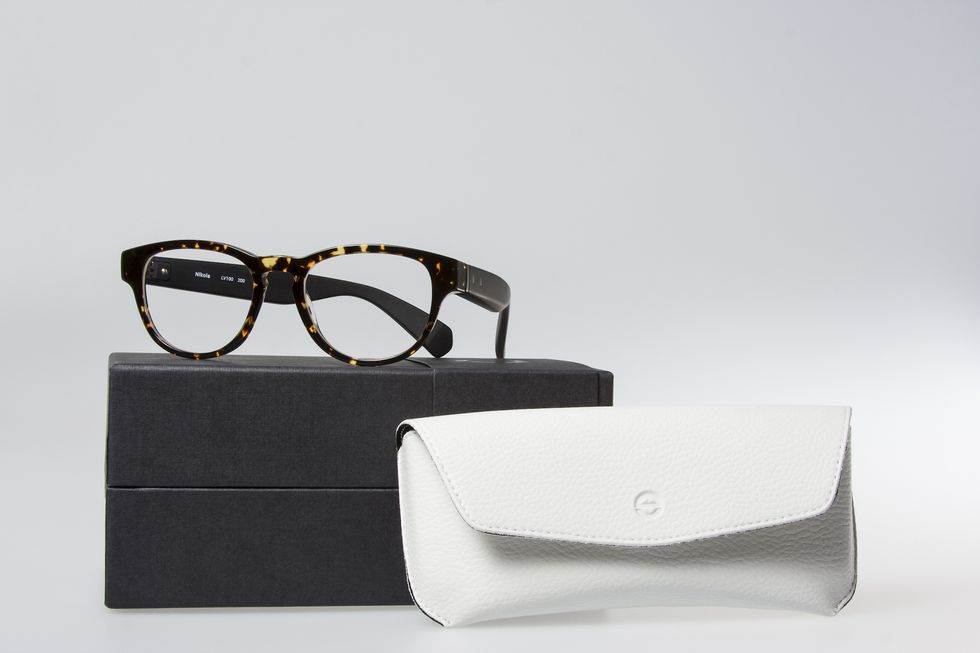Last year, VSP, the nation’s largest vision care provider, unveiled what it thinks is the eyewear of the future. It’s called Project Genesis and it comes from The Shop, a thinktank innovation lab within VSP. Project Genesis is essentially a pair of glasses with a slew of activity tracking sensors built into the temple. The idea here is that it’s a lot easier to remember to put on your glasses — which is what many people need to wear everyday anyway — versus something like a Fitbit. And sensor-laden eyewear offers other potential metrics too, like gait and posture. Now, VSP is ready to take the next step. Starting this Saturday, it’s partnering with University of Southern California’s Center of Body Computing to conduct a four-month long pilot study of the glasses with hundreds of volunteers. Oh, and the hardware has also been completely reimagined into something much more consumer-friendly. Say hello to the Level.
Gallery: Level eyewear | 5 Photos

-

-

-

-
 +1
+1
Level is essentially the second-generation edition of Project Genesis. It retains many of the same sensors as before — they include an accelerometer, a gyroscope and a magnetometer — but they are now housed in a much slimmer and more stylish package. “We built it from the ground up into something unique,” says Jay Sales, co-lead of The Shop on the west coast. “We shrunk the components down and made it into something much more aesthetically pleasing.” With Project Genesis, one temple was a little heavier and bulkier than the other due to the sensor housing. But with Level, both temples are equal in size.
There’s also Bluetooth for easy pairing with a companion mobile app (available on both iOS and Android) and a battery that lasts about three days in between charges. It has magnetic mount charging with a port access hidden inside the hinge and a charge time of around 30 minutes. It’s water-resistant too. But the one feature that really stands out to me is that it has a “Find My Glasses” feature, where you can locate your misplaced frames through the app.
The Level comes in three different eyewear designs. They’re designed for both men and women, come in a variety of different colors and are named after three famous innovators; Nikola Tesla, Marvin Minsky and Hedy Lamarr.
Right now, they’re set up to measure step count, calories burned as well as activity time. As part of the pilot study, the companion app is also set up to sync with VSP Global’s Eyes of Hope initiative. Every time participants accrue enough points from their daily step goals, it’ll trigger a donation of a comprehensive eye exam plus a pair of glasses to someone in need. The app also lets you connect with other users to form a social network of sorts. You can follow along with their progress and encourage each other along the way.
Dr. Leslie Saxon, the founder and executive director of the USC Center for Body Computing, hopes that it’s this community aspect that’ll help separate Level out from other wearables on the market. “A lot of people on wearables go off them,” says Saxon. “There’s no discovery after awhile because the experience isn’t durable. The community isn’t there.”

One of the reasons VSP is doing this pilot study is because it’s a health care company, not a traditional hardware company. “We’re not looking at it as a straight consumer product,” says Sales. “We need to make sure that the experience that we’re providing is actually adding value. We wanted to put more rigor around it.” So in addition to the USC study, VSP is also going to be distributing the device to MIT and select members of its provider network to get a better feel of how people react to Level.
“A lot of companies will put digital health products out there that are unregulated,” says Saxon. “At USC, we test all the products. We want to show the world that it’s better than the status quo, that it creates a positive feeling. Plus, we’re not going to sell that end data to anyone. We just want to test to see if it works.”
“It’s a mature, second-gen approach to wearables,” she adds.
As for when Level will finally be ready for consumers, well, that’ll probably be awhile yet. “We want to determine that we don’t have yet another wearable novelty,” says Sales. “It’ll be ready for the market when we know it’s adding value to our members lives.”
“Once we get the first one to market,” he says, “we’ll see where we go from there.”


![[World Sleep Day] Recovering From Daylight Saving Time May](https://loginby.com/itnews/wp-content/uploads/2025/03/1741688395_World-Sleep-Day-Recovering-From-Daylight-Saving-Time-May-238x178.jpg)




